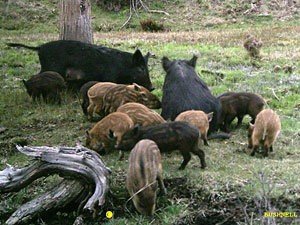Feral Swine Populations in OR Plummeting
/The population of feral swine in Oregon has experienced a drastic decline in the past decade, from 3,000 individuals to around 200. This is due to the state declaring an open season on feral pigs. In 2001, state lawmakers reclassified the pigs from livestock to predatory animals, allowing them to be hunted without regulation. Though some may not think of the pigs as a dangerous invasive species, they can cause great damage to fish and wildlife habitat, agricultural lands, and protected riparian habitats.
Photo courtesy of Oregon Department of Fish & Wildlife.
In addition to damaging important habitat, they can also pose a serious health risk. Rick Boatner, Oregon Department of Fish & Wildlife's Invasive Species Coordinator and Oregon Invasive Species Council member, called the pigs “walking disease factories”. They can carry up to 40 separate diseases that are dangerous to both humans and livestock.
To help quantify populations, address specific populations of concern, and to follow Oregon law, report all feral pig sightings by calling the toll-free feral swine hotline: 1-888-268-9219. Please also visit the OISC Squeal on Pigs campaign page for more information about feral swine in Oregon.
The original article was written by the Associated Press with information from the Bend Bulletin.
Click here to read the full article.

